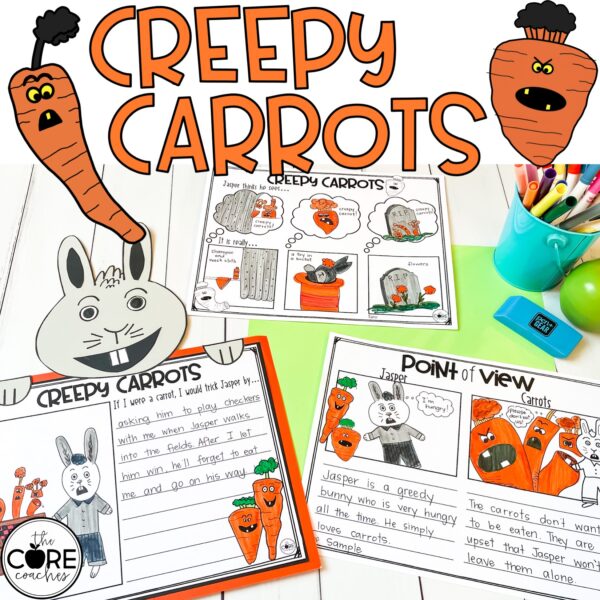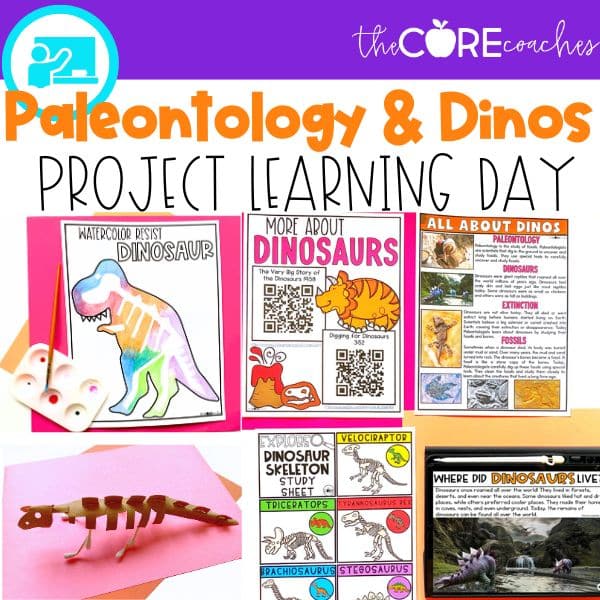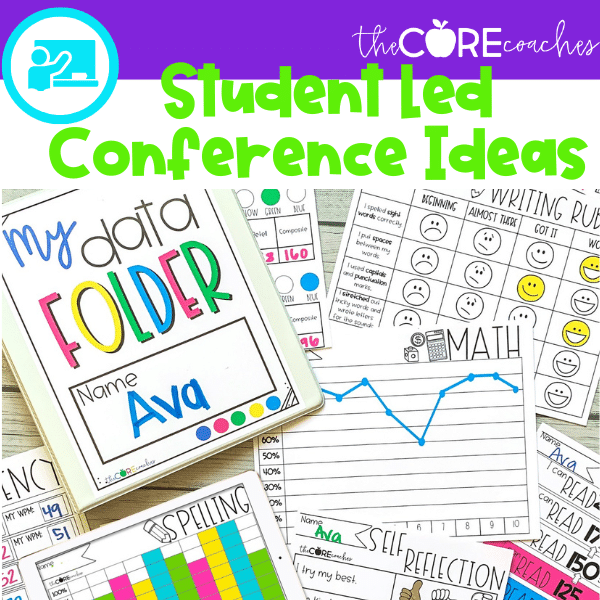6 Best October Read-Alouds Books Rigorous Comprehension Activities
We recently revised our October Read-Alouds. We are in love with this combination of new best sellers and old favorites, so we chose not to change any of these titles. These stories are complex enough, and they lend themselves to span across 3-5 days. While teaching each title, we cover many Common Core Literature Standards while also giving ourselves time to respond to the text with writing and art. Each day we read the book for a different purpose and students complete a different activity. We wrote rigorous text dependent questions where students use evidence from the text to deepen their understanding of the stories.
We created graphic organizers and writing in response to text activities to incorporate writing standards. We also incorporated a craftivity to complement each read-aloud and designed bulletin board headings to display the work.
Our students fall in love with these stories because we dive deeply into them. Instead of reading the story once, we take the time to understand key ideas and details, analyze craft and structure by examining dialogue, typography, word choice, etc., and focus on the integration of knowledge and ideas by searching for information that comes from the illustrations. We have included a brief overview of how we taught each book.
The Adventures of Beekle Read Aloud Lesson Plan
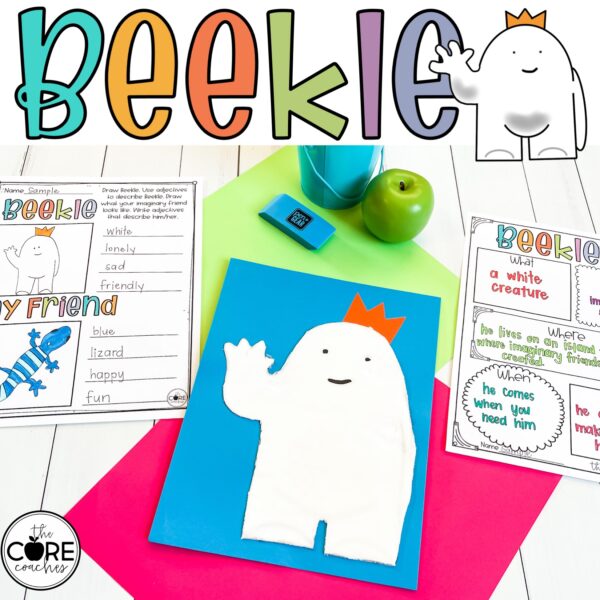
Beekle is a heartwarming story that will ignite your students’ imaginations as they travel to a place of imaginary friends and unbreakable bonds of friendship. Beekle is an imaginary friend who is searching for a child to imagine him. Instead of waiting to be chosen, Beekle decides to search for his friend. Readers follow him on his journey to the real world, where he explores strange real world things. Beekle has a fun twist at the end that students don’t typically catch the first read. Its clever story-line requires inference and analysis of illustrations, which make it perfect for a close read.
We decided to use the 5 w’s (who, what, where, why, when) to discuss the key ideas and details of the story. Students also found adjectives to describe Beekle. Then, students imagined their own friend and wrote adjectives to describe him/her. Finally, students filled out a 5w’s page on their own imaginary friend and used their graphic organizer to write their own story.
Creepy Carrots Read Aloud Lesson Plan Buy it On Amazon.com
Creepy Carrots tells the story of Jasper, a rabbit who can’t get enough carrots. He takes them from Crackenhopper field and eats them day and night. One day, after Jasper helps himself to another snack, he suspects that the carrots are following him. Is Jasper paranoid, or are the creepy carrots actually following him? This clever tale keeps students guessing until the very end…then delivers a twist! We created several graphic organizers for this story. Students recorded the events, analyzed point of view, and wrote about how they would trick Jasper. To learn more about our Creepy Carrots interactive read-aloud lessons click here.
Our students LOVED watching this video about the illustrations after answering the day 3 text dependent questions.
Bone Soup by Cambria Evans
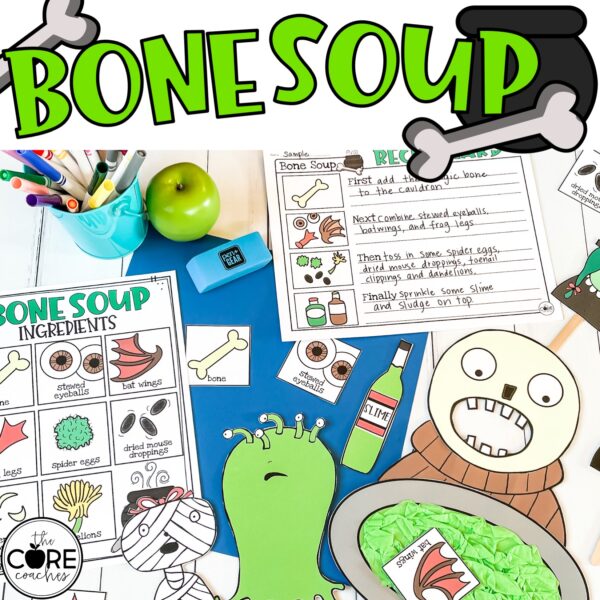
Bone Soup takes a Halloween spin on the classic tale “Stone Soup”. Finnigin is a skeleton known across the land for his voracious appetite. When the town creatures hear of his impending arrival, they hide their food and lock their doors. That is until Finigin concocts a scheme that tricks all of them into giving him food to make magical bone soup. This story is perfect for retelling key ideas and details by sequencing. We created stick puppets and a Finnigin paper bag puppet for students to feed him the ingredients in bone soup. Our students also wrote Bone Soup recipes and created their own crazy soup concoctions.
Pumpkin Eye by Denise Fleming
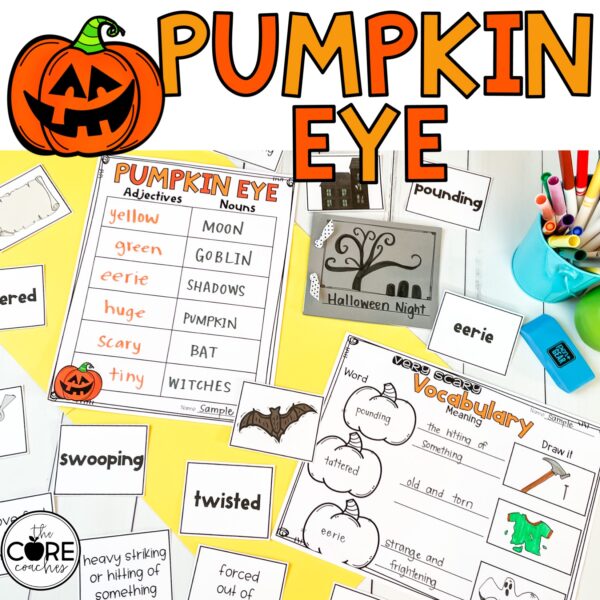
Pumpkin Eye is the perfect book to help tackle poetry Core standards. This spooky, mysterious rhyming text captures the essence of Halloween night. Students are enchanted with its beautiful illustrations and detailed descriptions. We found adjectives and nouns in the text. Then, students brainstormed their own Halloween nouns and adjectives to describe them. They used their words to write and illustrate a Halloween night poem book.
Piggie Pie! and Zoom Broom by Margie Palatini
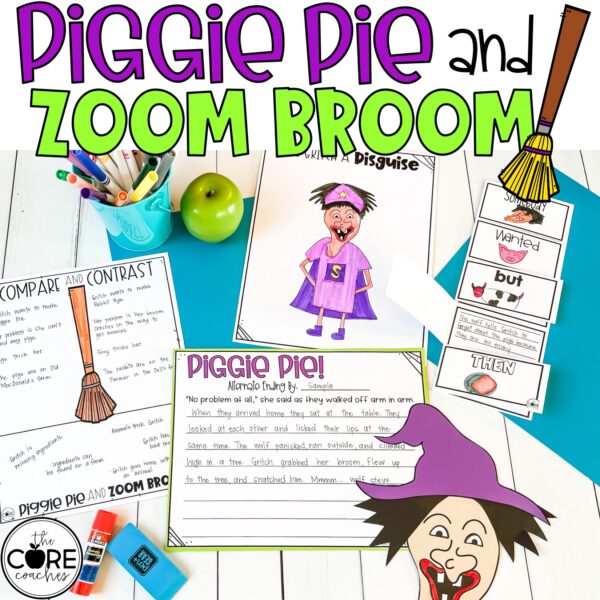
Piggie Pie is a truly hilarious story about Gritch the witch’s quest for pigs to make piggie pie. She flies to Old MacDonald’s farm to find some plump piggies to satisfy her craving. When she arrives at the farm, there isn’t a piggie to be found. The piggies have outsmarted Gritch by disguising themselves as other animals. This story keeps students laughing the entire time. Students squeal at the end when Gritch meets Mr. Wolf and they each have their own agenda for lunch. Zoom Broom, the squeal, is equally entertaining. This round, Gritch has a craving for Rabbit Rye. Her broom breaks down on her way to snatch rabbits from the Farmer in the Dell. She visits Foxy’s store to buy new transportation, where she isn’t impressed with his cheesy sales tactics.
During these lessons, we compared and contrasted the two stories Piggie Pie and Zoom Broom. For Piggie Pie, we focused on key ideas and details by having students complete a “somebody-wanted-but-so-then” flip book. Students wrote an alternate ending to the story and designed a disguise for Gritch to hide from the wolf. After discussing the key ideas in Zoom Broom, students were able to complete a Venn diagram, comparing the two stories.
Bats by Elizabeth Carney
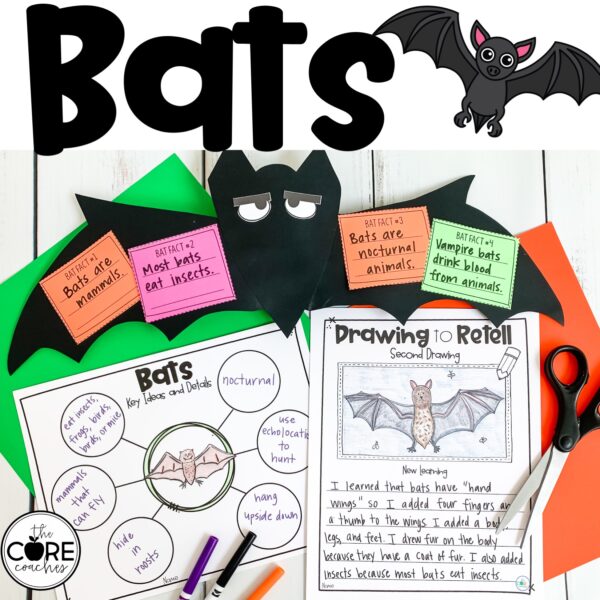
We love National Geographic Kids Readers for teaching nonfiction. They are full of interesting information, vivid photographs, and many text features. “Bats” is no exception. Students will love diving into this high interest topic with this close read. We included one of our favorite strategies with this book, “Drawing to Retell.” Students will draw a bat before and after reading the text and write about the changes they made to their illustrations. Students will also collect key ideas and details on either a web, or note-taking sheet. To address craft and structure, they will analyze text features to find more information. Finally, students will synthesize all the information they have learned to write bat facts on a darling bat craftivity. To teach the informational text core standards with Bats click here.
We have written detailed lesson plans for each of these books that can be found in our Teachers-Pay-Teachers store. You can purchase each read aloud separately or in the October Read-Aloud Bundle for First and Second Grade.
Get Access Today!

Subscribe to receive instant access to the free resource library and be updated about our fresh new product releases!
Success! Now check your email to confirm your subscription.

